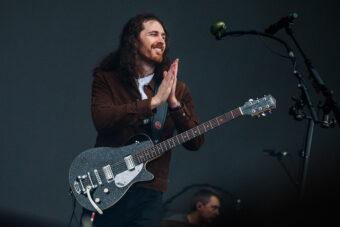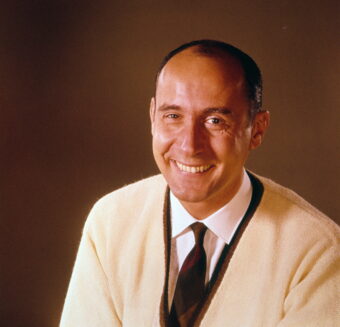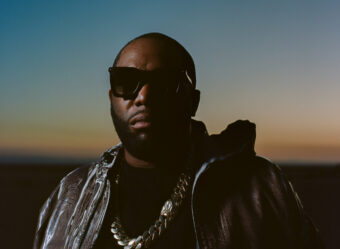Since the tragic death of David Foster Wallace on September 15, 2008, we’ve seen a small but significant number of works by the author unearthed for the first time, or cannily repackaged. These include his incomplete novel The Pale King, his 2005 commencement speech for Kenyon College, and even his undergraduate senior thesis. Still out of print, however, and selling for hundreds of dollars used, is Wallace and Mark Costello’s 1990 book Signifying Rappers: Rap and Race in the Urban Present. This book is often diminished by those studying Wallace, even though it is an early example of the author’s published non-fiction. According to 2003’s Understanding David Foster Wallace by Marshall Boswell, Wallace’s non-fiction career was based “on the strength of Signifying Rappers.” And so, it seems strange to treat a book about hip-hop co-authored by David Foster Wallace as barely even a footnote, especially when his college papers have been made available.
One problem, it seems, is that Wallace was candid in his dislike of his early work, and didn’t comment on the book very much. As a result, Signifying Rappers has garnered a reputation as insubstantial, or even a little bit of an embarrassment. In D.T. Max’s new biography of Wallace, Every Love Story is a Ghost Story, Max dismisses the author’s interest in rap: “Wallace’s passion for rap was theoretical, verbal, abstract. The music never touched him as did the stoner songs of high school or the moody tripping songs of Amherst. His interest had the quality of a very smart kid slumming it.” Most slumming-it smart kids didn’t take the time to co-author a book about the then-burgeoning genre, though.
In the Village Voice , with the snarky glee of an Internet rap-blog commenter in the 2000s, Robert Christgau mocked Costello and Wallace’s inability to get their facts straight. Indeed, they did forget about Run-DMC’s King Of Rock when they moved through the group’s discography, and they hinged the book’s conclusion on misheard lyrics from Ice-T’s “The Hunted Child.” As the 140-page theory-soaked rant comes to a close, Costello and Wallace celebrate “a five-minute untraceable cut” with the “inscrutable chorus ‘Honeychild / I’m the honeychild.'”
Wallace didn’t like the book and “the dean of American rock critics” panned it, so most people decided that it wasn’t worth reading. Christgau’s criticisms are certainly valid, but they also seem beside the point. This is a book that works because its authors have more enthusiasm than knowledge, and don’t know any of the rules for how they’re “supposed” to approach rap music. That can be thrilling.
Signifying Rappers is also incredibly mindful of its whiteness, and even seems to predict the self-aware, open-source-inspired explosion of excited, amateur-ish blogging of the 2000s. The first part of the book is called “Entitlement,” and the book’s premise is pretty simple: Here are two dorks with “an uncomfortable, somewhat furtive, and distinctly white enthusiasm for a certain music called rap/hip-hop.” While their outsider-ness allows for goofy gaffes like not knowing an Ice-T song they probably should know if they’re going to write a book about rap, it also provides them with a nutty, ballsy freedom to riff and explore. A favorite is Costello’s dissection of Jesse Jackson’s lie about witnessing Martin Luther King Jr. die while sporting a shirt that Jackson claimed was splattered with the blood of MLK. Jackson wasn’t there, and this epic fib becomes (if you buy into Costello’s theorizing) one of the sources for hip-hop’s signifying and \complex wrestling between reality and “reality.”
Even if Signifying Rappers‘ obsequious style puts you off, it remains a fascinating artifact. It’s quasi-juvenilia from one of American literature’s best postmodern writers. And it’s hip-hop commentary from a time when the genre was still forming, and the rules for how to approach this stuff critically, weren’t established quite yet. It gives the book an unfettered freedom that couldn’t exist at any other moment in hip-hop history.
To illustrate the book’s prescience and precociousness, I picked a few of my favorite quotes. Page numbers refer to the second edition of Signifying Rappers, published in 1997:
“What makes this stuff so much more disturbing, more real to outsiders than the Punk rock even those of us who remember it could never quite take seriously? Maybe even a closed music has to have some kind of detente with received custom: I always found it tough to listen straight-faced to a nihilist-philosophy lecture from someone with a chatreuse mohawk and an earring in his eyelid who punctuated with vomit and spit. All doctrine and pronouncement, exclusively anti-, this Punk of a decade past afforded even willing mainstream listeners to grab onto. I have no idea what a punk performer thinks, feels, is, day-to-day…in fact, always suspected he had no day. Can you imagine a Punk with four-foot hair and spiked jacket and nose ring, say, eating a bologna sandwich? Replacing a light bulb? Putting a quarter in a meter? Not me, boy…Public Enemy, and N.W.A., Ice T and Schoolly D discomfit us, our friends, the critics we read and cornered, because the Hard rappers’ lyrics are conscientious about being of/for the real lives and attitudes of recognizable (if alien) persons.” (32-33)
“Ironies abound, of course, as ironies must when cash and art do lunch. Tearing down the prop-thin symbolic walls, Run-DMC aim to celebrate desegregation, but miss the fact that Aerosmith, those whitest of white rockers, are merely big-budget Led Zeppelin ripoffs, and that Led Zep came straight outta the jet-black Rhyhtm & Blues of Chicago’s Chess Records. Dancing with Steve Tyler, Run-DMC forgets that Muddy Waters’ sideman Willie Dixon had to sue Led Zeppelin to get proper credit for their use of his blues. “Walk This Way” is an unwanted reunion of 80s black street music with part of its rich heritage, as that heritage has been mined and mongrelized by Show Biz. If this is desegregation, then shopping malls hold treasure.” (68)
“Public Enemy’s calculatedly outrageous talk (cf. Professor Griff’s infamous ‘Why do you think it’s called jewelry?’ Washington Times interview) owes a debt to the self-promoting 60s, when the Black Panthers posed for Time magazine toting borrowed, unloaded shotguns. Before the Panthers, there was Dylan, showing up for a major press conference in a Mad Hatter costume, carrying a jumbo lighbulb, telling an audience soon after JFK’s death that he saw some of himself in Lee Oswald. There’s John Lennon, in the hysteria surrounding the Beatles’ 1964 arrival in New York City, saying that the Fab Four were bigger than Jesus Christ, later lamely back-pedaling, claiming that he’d really just meant that the Beatles sold more records than Jesus Christ. So too P.E. back-pedaled from Proffessor Griff’s antisemitism, first telling interviewers he didn’t mean it, then that he didn’t speak for the group, then firing Griff from the band and refusing comment altogether, later back-pedaling from their back-pedaling, quietly reinstating Griff in a limited role.” (88)
“Our opinion, then, from a distance: not only is serious rap poetry, but, in terms of the size of its audience, its potency in the Great U.S. Market, its power to spur and to authorize the artistic endeavor of a discouraged and malschooled young urban culture we’ve been encouraged sadly to write off, it’s quite possibly the most important stuff happening in American poetry today. ‘Real’ (viz. academic) U.S. poetry, a world no less insular than rap, no less strange or stringent about vocal, manner, and the contexts it works off, has today become so inbred (against its professed wishes) inaccessible that it just doesn’t get to share its creative products with more than a couple thousand fanatical, sandal-shod readers…” (100-101)
“The beauty is the way that all this stuff is stripped to its glowing bones in a Marginal music without any of the old puritanic baggage about public verbal Taste that in the white community breeds a near-slapstick hypocrisy, one whereby most of us loudly ridicule ’80s ‘consumerism that borders on the onanistic’ while composing high Nielsen audiences for ‘Lifestyles,’ ‘Dallas’ so on. It could well be that, conceived in rural, shit-kicking Illinois, then born in Beverly Hills, real Reaganism just wasn’t ever designed for segments of the population who tend to let what they’ve bought all hang out.” (125)





